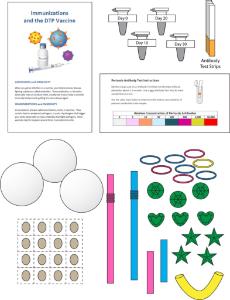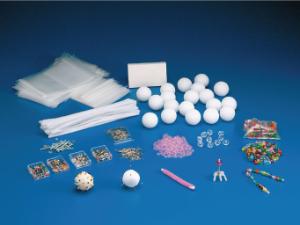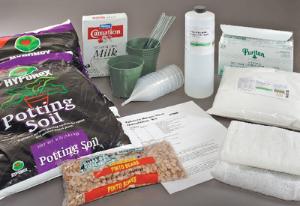How vaccines take a big shot against viruses
All grades
Let's face it; nobody likes getting a shot. They can hurt a little, and it's no fun getting jabbed by that needle, OUCH!
But students may be interested in learning how shots called vaccines work to keep people from getting some serious diseases. These diseases could make you very sick. The pinch from a shot isn't nearly as bad as those illnesses.
Your students probably already know that viruses like the ones that cause the common cold can make them feel lousy, but some other germs like the ones that cause diseases such as measles and polio are far more dangerous. Our grandparents and great-grandparents would recall a time when scientists and doctors were in a race to find ways to keep people from getting those terrible diseases. Thank you, Jonas Salk, Thomas Francis, Jr., Albert Sabin, et al., you did it!
Now, the race is on to find a vaccine for the novel coronavirus (COVID-19).
What's in a vaccine?
Scientifically speaking, a vaccine is a suspension of weakened, killed, or fragmented microorganisms or toxins or of antibodies or lymphocytes that is administered primarily to prevent disease. People are surprised to learn that vaccines actually contain bits of the germs that they're protecting us from. It's a head-scratcher to consider that you're trying to keep from getting sick by putting germs inside your body, but that's how vaccines work!
The germs that are in a vaccine are already dead or sometimes very weak, so they're not dangerous, they're just imitating an infection, but your body doesn't know the difference (hee, hee, fooled you!) The body tries to attack and destroy the germs in the vaccine, just like they were the real deal.
What about your immune system?
A vaccine can provide active immunity against a specific harmful agent by stimulating the immune system to attack the agent. Once stimulated by a vaccine, the antibody-producing cells, called B lymphocytes, remain sensitized and ready to respond to the agent if it makes its way into the body. Vaccines can also provide passive immunity by providing antibodies or lymphocytes already made by an animal or human donor.
So, while your body is battling those weakened germs in the vaccine, it's also making the antibodies it needs to quickly recognize and destroy the real germs in the future before they have time to make you sick. You get a stronger immune system as part of the deal.
Check out the "Pathogens, Antibodies, And Vaccines" activity in the recommended products; your students can learn how the immune response protects against diseases caused by bacteria.
Does having the vaccine mean you'll never get sick?
When your body learns how to protect itself from a disease, it's called being immune to an illness. In most cases, it means you won't get the illness at all. But sometimes, you can still get a mild case of the illness (ugh!) This can happen with chickenpox. Even kids who get the shot to prevent chickenpox can still get a case of it. The good news is that they rarely get a bad case of it. Milder cases mean fewer spots, low fever, and less itching. We can handle that!
Students may find it easier to remember that the germs in the vaccine are the practice round that trains the body to fight in the event of a real battle with real germs.
So, just to reiterate: scientists need to innovate to get vaccines that imitate to help eliminate our chances of getting sick!
Recommended Products
[StartProductBlock]

Science Take-Out® Pathogens, Antibodies, And Vaccines
Students create models of pathogens, antibodies, and antigen-antibody interaction and perform simulated laboratory tests to compare the antibody levels of unvaccinated and vaccinated children who have been exposed to the bacteria that cause pertussis.
[EndProductBlock]
[StartProductBlock]

Virus Modeling Kit
An interdisciplinary kinesthetic lab that models of 5 different viruses: tobacco mosaic, mumps, influenza, potato X, and a bacteriophage. Teaches the diversity of structure of different viruses, provides an excellent lead into lessons on the lytic and lysogenic cycles of viruses, and shows that animals, plants, and bacteria are all susceptible to viruses.
[EndProductBlock]
[StartProductBlock]

Ward's® Tobacco Mosaic Virus Inoculation Lab Activity
Study the effects of viral transmission. Explore viral damage to living plant organisms. Discuss applications for viral-induced genetic engineering.
[EndProductBlock]
